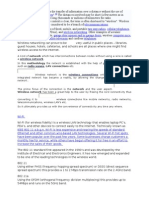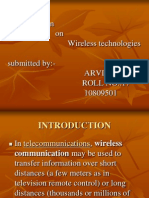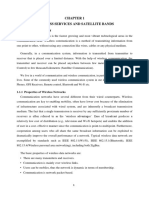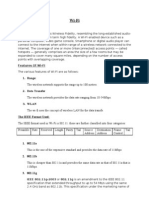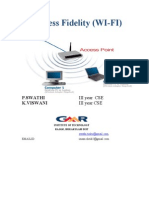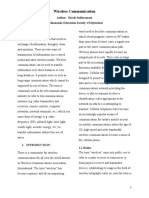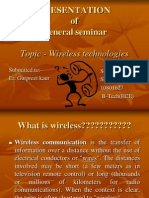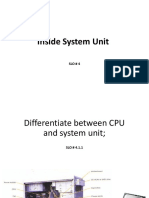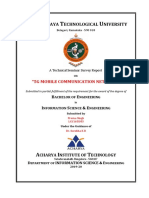0% found this document useful (0 votes)
154 views54 pagesWireless Communication
WiMAX is a wireless technology that provides broadband connections over long distances, up to 30 miles. It uses microwave frequencies to transmit data at speeds up to 1 Gbps, allowing internet access across cities and countries. WiMAX was developed from the IEEE 802.16 standard and aims to maintain the speed and security of wired networks with the mobility of wireless. It offers advantages over wired broadband like lower costs and ability to serve many users from a single base station. However, its range depends on line-of-sight transmission.
Uploaded by
FARIHA KARIM INAM UL KARIMCopyright
© © All Rights Reserved
We take content rights seriously. If you suspect this is your content, claim it here.
Available Formats
Download as PDF, TXT or read online on Scribd
0% found this document useful (0 votes)
154 views54 pagesWireless Communication
WiMAX is a wireless technology that provides broadband connections over long distances, up to 30 miles. It uses microwave frequencies to transmit data at speeds up to 1 Gbps, allowing internet access across cities and countries. WiMAX was developed from the IEEE 802.16 standard and aims to maintain the speed and security of wired networks with the mobility of wireless. It offers advantages over wired broadband like lower costs and ability to serve many users from a single base station. However, its range depends on line-of-sight transmission.
Uploaded by
FARIHA KARIM INAM UL KARIMCopyright
© © All Rights Reserved
We take content rights seriously. If you suspect this is your content, claim it here.
Available Formats
Download as PDF, TXT or read online on Scribd
/ 54
